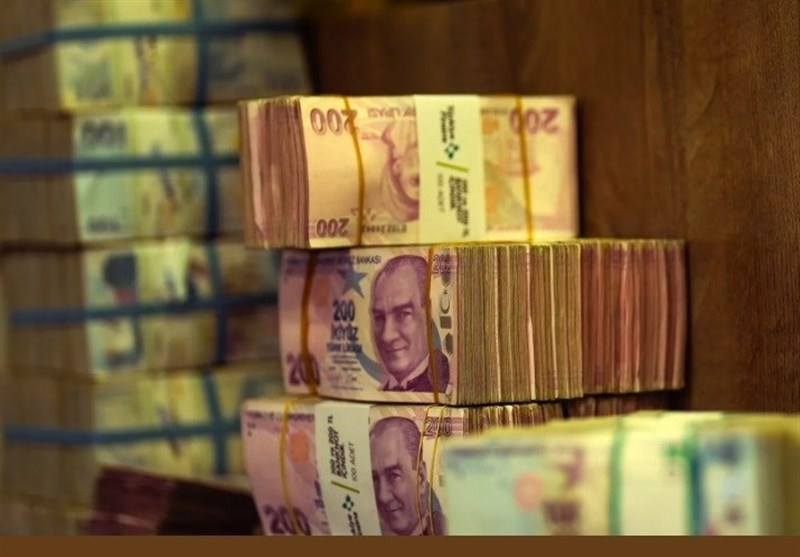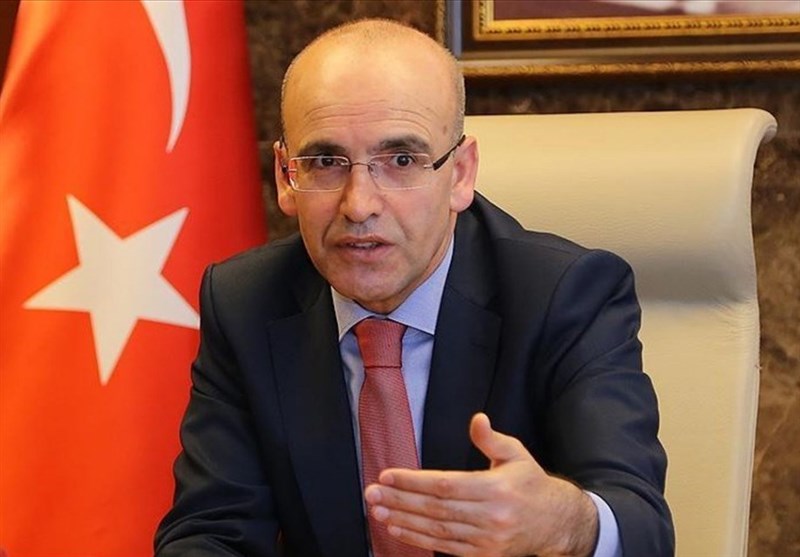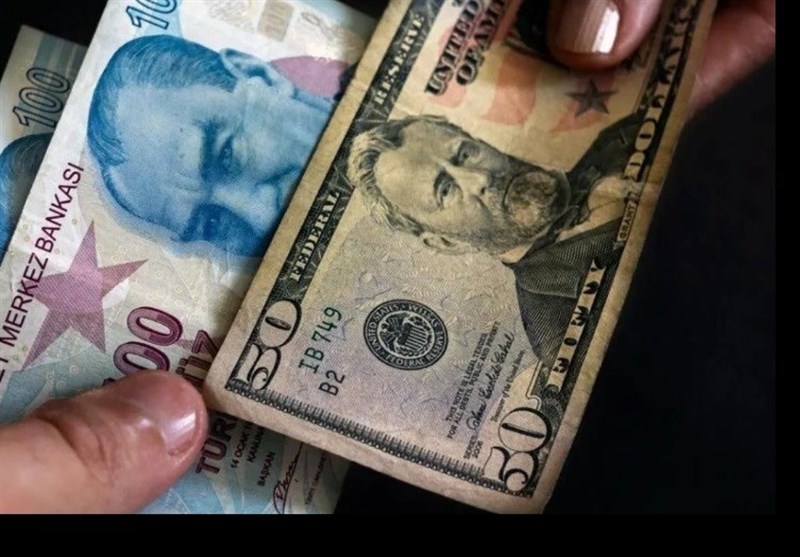Achilles’ heel of the Turkish economy – part one

| In the Turkish economy, there are important structural problems that will take time to solve, and promising a transition from inflation in the short term is a fruitless political act. |
According to the international group Tasnim news agency, the economic crisis in Turkey continues continues and apparently the economic team of Mehmet Shimshek has not been able to take any special action in the 7 months since he took the helm. and there are only 53 days left for municipal elections. In this situation, Erdogan expects the economic team of his cabinet to do something. But many Turkish economists have three important messages for Erdogan, none of which are typical of the president.
They explain the reasons for the economic crisis and the ever-increasing inflation and instability in the Turkish market as follows. They describe:
1. An important part of the current crisis is the results of Erdoğan’s ineffective policies and his continuous interference in political and monetary management, and he should not interfere from now on and work leave it to Kardan.
2. Erdoğan’s senior son-in-law, Barat Albayrak, spent more than 128 billion dollars of foreign exchange reserves during the time when he was in charge of the economy. It has been 3 years since his removal, but he has caused damage that will not be compensated soon, and therefore, in addition to the position of the minister, the principle of meritocracy and avoiding nepotism should be the top goals in banks and other institutions and high economic institutions. /p>
3. In the Turkish economy, there are important structural problems that will take time to solve, and promising a transition from inflation in the short term is a fruitless political act.
It is in such a situation that Mehmet Shimshak, The Minister of Finance and Finance and the economic all-rounder of the Erdoğan government, in addition to trying to attract money and capital from Arab, European and American countries and banks, is fond of discussions and debates with economic experts in the fields of political theory.
In the past few days, on the X social network, in a scientific and polite manner, he also entered into a debate with his opposing economists, one of whom is Dr. Mehmet Ali Varchin, a famous Turkish economist and banker who For 3 decades, he held the post of vice president of one of the major banks in Turkey.
Dr. Verchin commented on the structural problems of the Turkish economy and the main Achilles heel of this country’s economic system. And he wrote his words directly addressed to Mehmet Shimshek.
The minister also responded to some of his comments and a discussion has actually taken place that can shed light on the economic problems of this western neighbor. Explain Iran to us.
Together, we review parts of Mehmet Ali Varchin’s long discussion:
Why I don’t agree with Mr. Shimshek?
We know that in the current sensitive situation, Mr. Mehmet Shimshek has two main goals and duties. First, increasing foreign exchange reserves so that Turkey does not have problems with foreign payments, and secondly, restoring financial stability, including price stability and controlling inflation in the market. Undoubtedly, establishing financial stability is necessary. So that a country like Turkey, which has a high external debt and current account deficit, does not have problems in its foreign payments balance. To achieve this, the currency entering the country should be more than the currency leaving the country.
Achieving these goals has clear and specific ways. We know that by increasing the export of goods and also the export of technical and engineering services, more currency can be imported into the country. However, apparently, our situation is urgent and our politicians prefer quick solutions and do not follow the old and traditional method of exporting and earning currency by exporting goods and services. For example, they believe in these quick solutions: borrowing from abroad or increasing the flow of hot international capital to Turkey.
I consider it necessary to mention that due to the nature of the processes Economically, in our country generally, both export and import are inflationary. In other words, the effort to increase exports does not prevent the depreciation of the lira, and at the same time, the increase of currency price, will raise the cost of imports and will have a negative impact on the process of fighting inflation.
But it is not like we are in a dead end. Another solution is: increasing the supply of goods in the domestic market through imports with cheap currency will help fight inflation.
We have discussed these issues and Mr. Minister also Tag my name in your messages so that we can continue discussing these issues. Mr. Wazir wrote a 4-sentence message that clearly included my name as an addressee:
First of all, let me check Mr. Shimshak’s claims. Below each of these claims, I present my assessment:
Mehamet Shimshak: the main factor determining exports , it is only foreign demand and currency price does not have a significant impact.
Let’s assume that a European importer is looking to buy a product that Turkey is one of the sellers and exporters of. The European side checks the market and sees that Turkey and 4 other actors have quoted different prices for this product.
One sells the product for $8, the other for $9. dollars, that one 10, 11 and finally 12 dollars. Assuming product quality, delivery terms and payment are equal, it is obvious that our European customer will prefer the $8 product. For psychological reasons, he will accept even the price of 9 dollars, but it is certain that he is not willing to buy at the price of 10 dollars or 11 and 12 dollars. So, the first and most important mandatory condition for selling goods with low added value in order to increase exports is “maintaining the price”.
The relationship between quoted prices and /www.tasnimnews.com/fa/currency” target=”_blank”>currency rate is clear and obvious. To produce a product, we buy a lot of raw materials and intermediate goods with foreign currency, and when we buy the materials with more expensive dollars, we have to sell them more expensively. Here, no matter how high the European importer’s demand is, it doesn’t matter to us. If the production process is expensive and we want to sell it expensive, it will buy the competitor’s product whose production is finished for the cheaper seller. This is where I do not agree with Mr. Shimshek.
Mehamet Shimshek: In the 10-year period of 2003-13, the average nominal rate The annual exchange rate was 3.3 percent. It was in this situation that Turkey’s real exports increased by 7.1%.
It is not so. At the end of 2002, one US dollar was worth 1.64 lira. In other words, the exporter who exported 10 million dollars worth of goods pocketed 16.4 million liras. But five years later, at the end of 2007, one dollar decreased to 1.16 lira. That is, since exchange rate decreased, an export company with sales of 10 million dollars received 11.6 million liras. Kurd.
In other words, at the end of five years, this company has received 4.8 million lira less. However, the consumer price index or CPI increased by 66% in the period 2003-2007.
In other words, if the sales revenue of an exporter is 10 million dollars, along with the inflation rate, that is 66% had increased, the money he received would be 27.2 million liras! I do not understand how it can be claimed that an exporter is not affected by this situation. Turkey witnessed the white and non-violent type of “destruction of exporters”!
In order to maintain prices, Turkish manufacturers first imported some important parts and then almost all parts and imported products with They offered a small profit to the domestic and foreign markets. Then it reached a point where the production became completely unprofitable and as a result many artisans became importers. Insisting on industrialism and thinking that one day the situation will be better, they could not compete with the importers and went bankrupt and sold their machines. I have traveled from Turkey to Uzbekistan, Ethiopia and India. You must be asking: How did our exports increase at the same time? The answer is as follows: because during this period the increase in exports took the nature of re-export to a large extent.
Don’t forget that in those 10 years, Turkey’s exports practically froze. And our total foreign trade deficit in the period of 2003-2013 reached 700 billion dollars. That is, the same period that Mr. Shimshek refers to as the “Golden Age”, is actually the root of many problems that we experience in the economy today!
while debt Turkey’s gross foreign exchange was 132.7 billion dollars at the beginning of 2003, it more than tripled to 405 billion dollars at the end of 2013. Does the foreign debt of a country whose exports increase increase to such an extent?
It is true that exports increased at a small rate, but both imports and foreign debts increased at rates of It increased very high and in huge sizes. Also, during this period, foreign direct investment, which is not considered foreign debt, crossed the hundred billion dollar mark. Is Mr. Şimşek trying to solve part of Turkey’s problems by increasing Turkey’s foreign debt?
In the next part of this report, we will discuss why low productivity is the Achilles’ heel. Turkey’s economy has transformed.
To be continued…
End of message/
| Publisher | Tasnim News |





